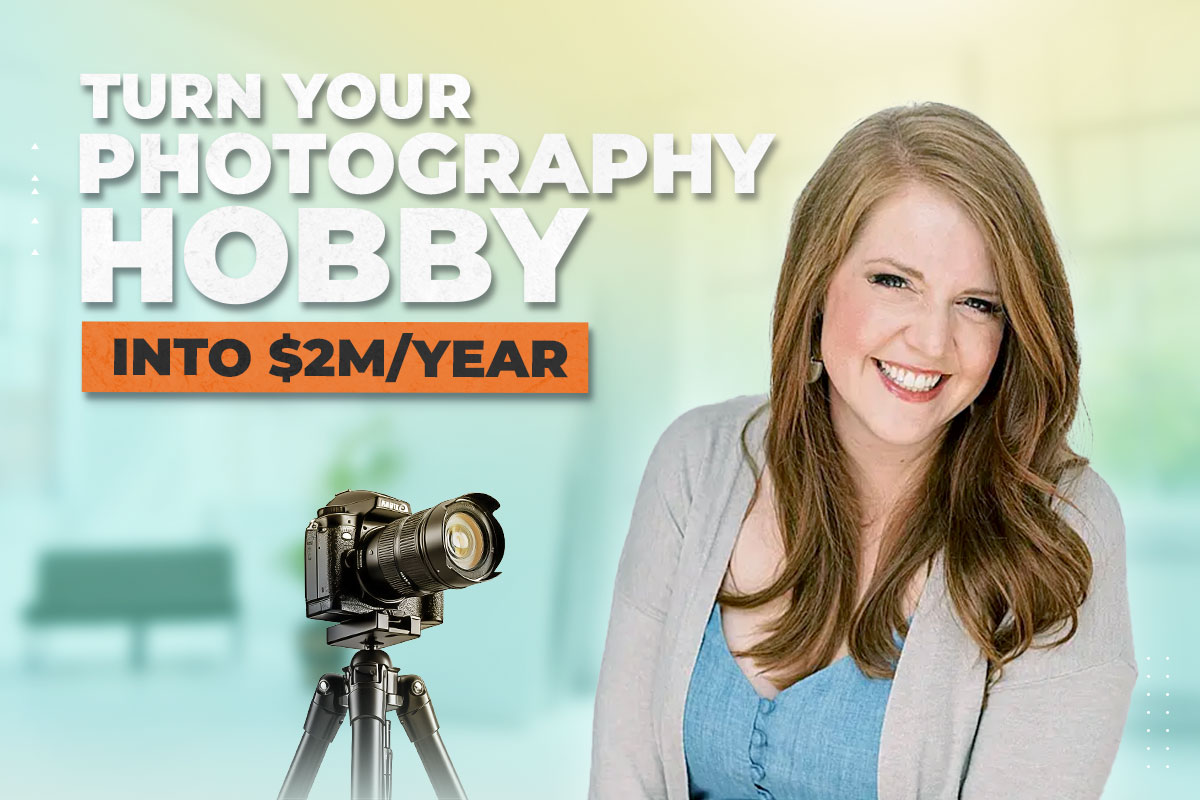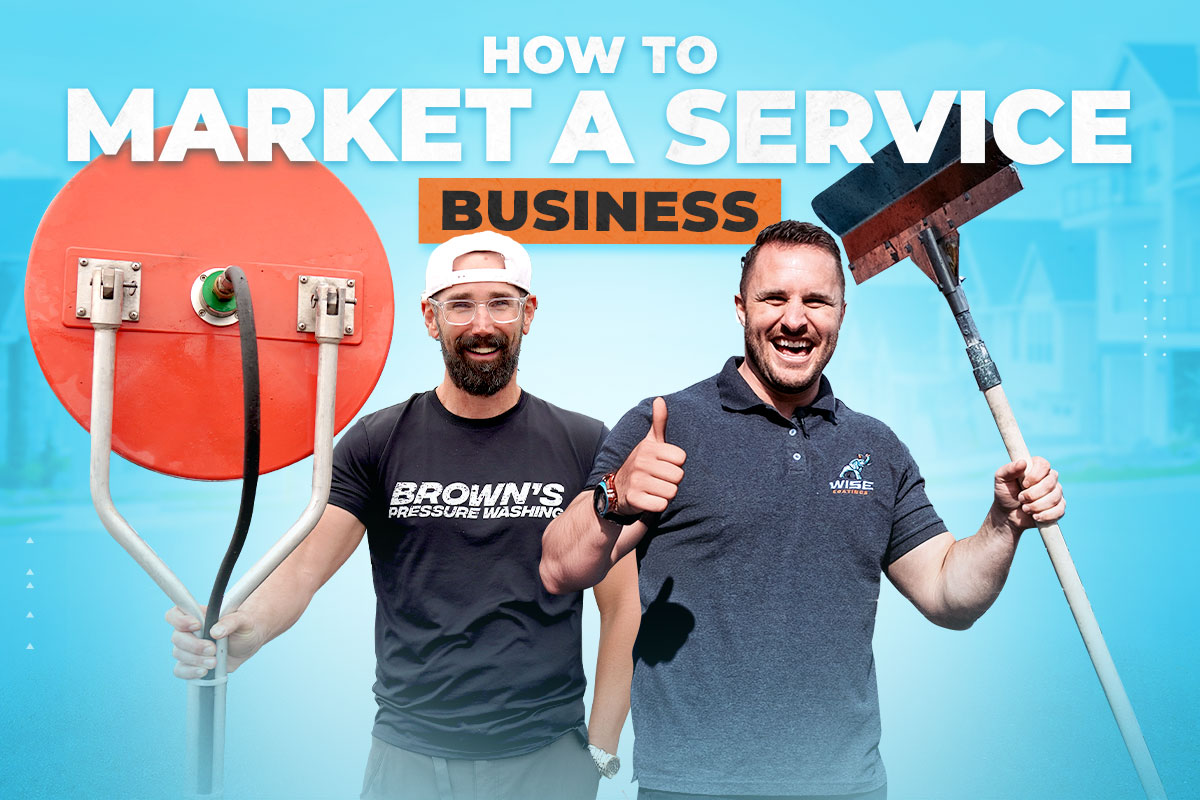Do you have a knack for taking pictures? Have friends and family asked you to photograph their special events? It may be time to consider how to start a photography business!
If you’re a budding photographer looking to make money from your passion, you’re in luck. In this article, we’ll show you how to start your own photography business.
To show you the ropes, we sat down with Katelyn James Photography. Katelyn got started when she was invited to help a friend with wedding photography.
She barely knew anything about photography, but today she’s making nearly $167K monthly. She’ll share the strategies she used to start a photography business.
Keep reading or click any of the links below to jump to the section of your choosing:
Learn About the Photography Industry
How much does it cost to start a photography business?

Starting a photography business costs between $2,000 and $20,000. Prices will vary based on your equipment, business model, and whether you have a studio. Typically, you should expect the following costs:
- Equipment: A camera and lenses costs between $1,000 and $10,000. You’ll also want a computer, external hard drives, memory cards, and a tripod. Consider investing in a drone and extra lighting.
- Software: At a minimum, you’ll need editing and accounting software, which will cost between $30 and $100 per month. Customer relationship management software and other systems could increase your total costs to $1,000 a month or more.
- Business registration and licenses: Expect to spend somewhere between $100 and $1,000 on business formation and proper licensing. Learn how to register a business.
- Insurance: Expect costs between $500 and $1,000 annually.
- Marketing: Your website and business cards will cost between $200 and $500. You probably want to add extra for advertising to start making money faster.
- Studio (optional): Expect to spend at least $1,000 monthly to rent a studio. Learn how to choose a location.
- Legal fees: You will need to spend between $300 and $1,000 to create contracts.
You’ll also need to include the costs of travel to locations in your budgeting. Don’t let the costs scare you. You can invest in new equipment as you go.
Katelyn told us:
Check out our interview with her below:
How much do photographers make?

Photographers make an average of $49,400 annually, but the most successful photography companies can make much more. Shutterfly is the latest photography company, and they make $1.1B in revenue with a 7.3% net profit margin.
You might not be able to make that much, but Katelyn is making $2M annually. There’s definitely money to be made in every segment of the photography industry.
Is photography profitable?
Yes. A photography business normally makes between 7% and 20% net profit margins. However, the industry is facing challenges from the prevalence of cell phone cameras and low barriers of entry that push profit margins down for many photographers.
Make sure to include travel costs and the time editing in your estimates to increase your profit margins.
How to Start a Photography Business

We’ve created a starting a photography business checklist to make it easy for you to launch your new business. Follow Katelyn’s advice and our step-by-step guide to start your own photography business in no time.
Step #1. Pick Your Photography Services
We asked Katelyn about generalized photography.
Photography businesses have a lot of choices when it comes to their market. Knowing your specialty is key to developing a solid business plan. It will save you substantial time at launch and during the development of your business.
If you’re not sure which market you want to pursue, here’s a list of potential markets you can research:
- Landscape photography
- Commercial photography
- Boudoir photography
- Real estate photography
- Product photography
- Wedding photography
- Event photography
- Newborn photography
- Sports photography
- Editorial photography
- Portrait photography
- School photography
- Studio photography
- Pet photography
- Stock photography
The most common photography market is portrait photography, but there are a lot of different options. Depending on what you’ll be photographing, you’ll need different equipment.
Korbin and Whitney Korzan founded Mile High Productions in 2015 as a side hustle. They’ve since worked with big clients like HGTV. Find out more in their interview below:
Keep reading for more information on how to start a photography business.
Step #2. Get Photography Equipment and Skills
You’ll need a camera, lenses, memory cards, and extra accessories that correspond to the type of photography you want to do. Katelyn suggests:
Other upgrades may include:
- Tripods: Expect to spend over $100 for a good one. Cheap ones will blow over with wind and break your camera.
- Lighting equipment: Make sure lights communicate properly with your camera. If you’ll be shooting indoors or outside, you might want a flash.
- Hard cases: Hard bags protect your equipment. Make sure to get a case that can be locked if you’ll be traveling with it.
- Extra batteries: It’s wise to have at least one extra battery that’s fully charged. A battery costs $15 to $50.
- Drone: DJI is the way to go for drones. They range in price from a few hundred dollars to more than $30,000. Don’t forget to get your FAA permit and local permits when needed. You may also need special insurance to fly it over a crowd.
- Software: Adobe Creative Cloud is the standard. It starts at $20 per month. Use your .edu email if you have one to save some money.
Here are some sites to help you find everything you need:
The next step is choosing a professional photography business name.
Step #3. Choose a Unique Photography Business Name
You need to choose a photography business name to help people identify your photography company. Check out our blog about cute business names or try our photography business name generator for inspiration.
Step #4. Start Your Own Business Legally

To start a photography company, you’ll need to:
- Create a business structure: Limited liability companies and sole proprietorships with a trade name are the most common.
- Get business licenses: Check with your local Small Business Administration office.
- Get your employer identification number (EIN): We explain how to get your EIN in our blog about registering a business.
- Get insurance: I suggest checking with Simply Business to get photography business insurance.
As a business entity, you can open a business bank account under your business name to separate your business and personal finances. A business bank account is required to maintain limited liability status. Find out more about business banking.
Create a Photography Business Plan
Every business should have a business plan. Even if it’s only a one-page business plan, it will help keep you on track. You’ll want to include:
- Your goals
- The types of photography you specialize in
- Your target market
- Pricing strategies
- Marketing strategies
- Your budget and how you will use it
Read our blog about writing a business plan for more information.
Step #5. Create Contracts
Professional photographers need contracts that are legally binding to define what’s included in their services. Photography business owners need to address the following:
- Services offered
- Time, date, and location of services
- Deposits
- Copyright and usage agreements
- Cancellations, returns, and refunds
- Add-ons
Any successful photography business will tell you that some clients will attempt to devalue your time if you don’t define everything clearly.
Step #6. Market Your Business to Find Clients

Marketing materials are a huge part of starting a photography business. We asked Katelyn about the best ways to market a photography business. She suggested:
Create a Website
Your photography website is a combination of marketing and business for photographers. If someone wants to see your work, they should be able to type in a domain name that’s easy to remember and find your portfolio.
Make sure your website is clean and professional. Obtain a domain name from a domain seller like:
If you’re not good at web design or you don’t have any experience, that’s okay. Check out our blog about how to build a website.
Katelyn wants you to know:
Make sure your site is always up to date and running smoothly. You never know when a potential client may look at your portfolio. Also, be sure to establish a solid privacy policy and terms of use for potential clients.
Use Social Media
Social media accounts are a phenomenal way for photographers to reach your target market. Set up business profiles on sites like Facebook, Instagram, and Behance (Adobe’s site for creatives) and constantly post your work.
If you want to make connections with people on social media, interact with them on your posts. It makes your business more personal and creates opportunities to gain more clients. Katelyn told us:
You can also use your profiles to guide potential customers to your website.
Share Your Photography Business Cards

A photography business card is a great place to show off your skills. Put some of your favorite photos on the back and your contact information on the front. A lot of photographers love MOO business cards because they let you have a different back on each business card.
If you’re looking for other photographer business cards, check out our blog on cheap business cards.
Other Marketing Methods
Don’t be afraid to reach out! If you’re just starting your photography business, think about contacting local real estate agents. You never know who might be looking for someone to take fantastic shots of their properties.
If you want to work in wedding photography, you can attend bridal conventions. Not everyone has a big budget for their photographs, and you can meet potential clients when you attend trade shows. Plus, it’s a great networking opportunity.
Another tactic is to run Google Ads campaigns. With their platform, you can create digital ads that are highly targeted to specific audiences and locations.
The ads cost less than traditional advertising platforms. It’s an easy and affordable method to reach a lot of potential customers with little effort.
If you’re not sure about Google Ads, you can hire a specialist through freelancing sites like Upwork. Just be sure they have an AdWords certification from Google.
Don’t forget to set up a Google Business Profile and add lots of pictures so that local clients can find you more easily.
Pricing
A great way to see how much you should charge is to look at what others in your market are charging for their services and compare their quality level to your own. Ask questions like:
- Are they putting out a better quality product?
- Do they offer services I don’t?
- Is their portfolio more comprehensive than my own?
Katelyn told us how to start a photography business and get the most value for your time:
Make sure to create all your marketing materials and save them in ways that are easy to edit. Now that you know how to market a photography business, it’s time to discuss the photo shoots.
Step #7. Conduct Photography Sessions

Photography businesses spend a lot of time working on sessions, and much of it isn’t apparent to clients. Let’s say you shoot family portraits. The time spent on the client shoot includes the time to:
- Create client contracts
- Educate the client
- Charge all your gear
- Drive to and from the photography session
- Photograph the customer’s session
- Cull photographs (eliminating unflattering and blurry photos)
- Edit photos
- Resize images
- Add photos to a gallery for your clients to view and buy
A successful business requires far more than what your customers will see. Katelyn explained that a new photography business owner will normally play a much different role than when the photography business grows:
Professional Photographer Resources
You might want to check out these resources to help you develop your photography skills. They have resources that are good for new photographers and people with a long photography career:
- Adobe tutorials for products like Photoshop or Lightroom
- Scott Kelby paperback books
- PHLEARN
- Creative Live
- Nikon Education
- Professional Photographers of America (offers affordable insurance too)
To learn more about how to launch and scale your business, check out The Business Startup & Growth Blueprint in the UpFlip Academy.
Photography Business FAQ
What is wedding photography?
Wedding photography services focus on photographing people’s wedding ceremony, the members of the wedding party, and the reception.
Wedding photographers may be on the same shoot for four to eight hours. They also need to be skilled at portrait photography and event photography because they have to pose people and capture live action shots.
This segment can be highly stressful, but you can make up to $10,000 per session. Your exact earnings will depend on your photography portfolio, region, length of time on location, and the package the couple purchases.
How to start a photography business from home
Make sure that starting a home business is legal according to your city, county, and homeowners association. From there, you can do the editing and maybe even some of the photography from home. The best part is that the Internal Revenue Service allows tax benefits for your personal office.
What types of cameras are there?

Canon, Nikon, and Sony are the main manufacturers of camera bodies. There are forums where photographers endlessly debate which one is better, but most professional photographers use one of those brands.
Each camera maker creates three main styles of cameras:
- DSLR full frame: These are high-end cameras. They have the best features and can run anywhere from $1,700 to $6,700. Honestly, you don’t need anything more than a Nikon D750 or the Canon EOS 5D Mark IV when you start a photography company.
- DSLR crop sensor: These are recreational cameras where the sensor only captures a portion of what you see through the viewfinder. You can learn to adapt your photographic vision to the part of the view that’s cut off, but it takes practice. The Nikon D3400 and the Canon OS Rebel T7 EF-S are good entry points for those starting new photography businesses.
- Mirrorless cameras: Cameras without the mirror are lighter, have smaller lenses, and offer a lot of new technology. They run from $1,300 to $6,500 for full-frame models. The Sony A7 IV is considered the top of the line, while Canon EOS R6 and Nikon Z6 II are also well liked.
You can find them all on Amazon.
For more information, I find B&H Foto and Electronics to be one of the best sources for photography knowledge. When you’re ready to buy, make sure to ask about warranties.
Shutters are one of the main failure points in a camera, but they’re normally good for over 100,000 shots. It’s critical to check this when buying a used camera.
How to start a photography business with no experience

Starting a photography business with no experience requires learning how to effectively use your camera and edit photos. Katelyn suggested:
You can outsource editing until you’re comfortable with the process. Katelyn also offers photography courses. She explained how she got into courses:
To learn from Katelyn, check out her free access training.
Ready to Start Your Own Photography Business? Give It a Try!
Photography is an awesome field! Many professional photographers find starting a new business to be a win-win scenario. Either you make a great living, you have some experiences you would never have imagined, or both.
Either way, you’ll learn a lot about yourself and the world and be better off for it.
As the Korzans told us:
What’s your favorite type of photography?





